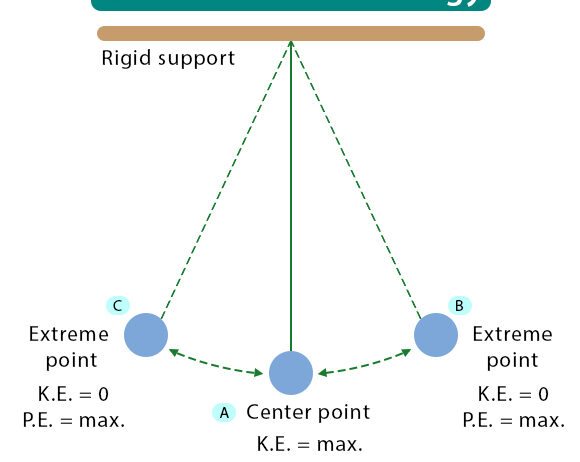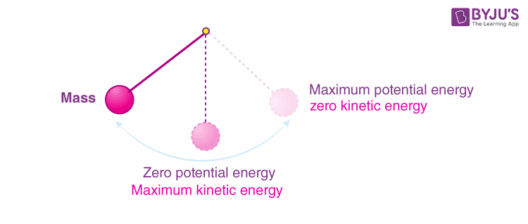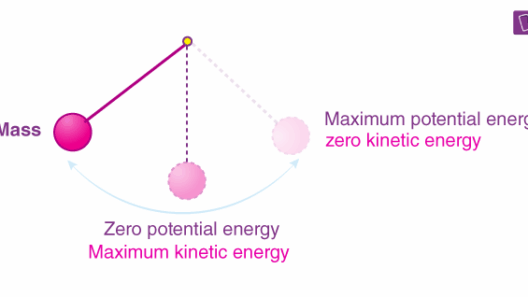The concept of conservation of energy is foundational within the domain of Earth science. It delineates the principle that energy cannot be created or destroyed; rather, it transitions from one form to another. This principle is paramount for understanding various natural processes that govern our planet’s environment, climate, and ecosystems. Through this exploration, we can unpack its significance in different contexts, facilitate an understanding of how it manifests in natural phenomena, and consider its implications for sustainable practices.
To begin, energy in Earth science can be categorized into several types—solar, thermal, kinetic, and chemical, among others. Solar energy, harnessed from the sun, is the primary driver of life on Earth. It fuels photosynthesis in plants, which in turn supports the entire food chain. The dynamics of solar energy and its role in Earth’s climate systems are essential facets of ecological studies. For instance, the conversion of solar energy into chemical energy, retained in organic matter, underpins the productivity of terrestrial and aquatic ecosystems.
Thermal energy, another significant type, relates directly to temperature and heat transfer within Earth’s systems. This energy originates primarily from the sun, but also from geothermal sources beneath the Earth’s surface. Understanding thermal energy is vital when evaluating climate change and its effects on global weather patterns. As thermal energy increases due to anthropogenic actions, such as fossil fuel combustion, it disrupts the delicate balance that has existed within Earth’s climate systems.
Kinetic energy—associated with the motion of objects—plays an essential role in various geological processes, including erosion, sediment transport, and tectonic movements. Rivers, for example, exhibit kinetic energy as they flow, shaping landscapes through erosion while simultaneously providing habitats for myriad species. Similarly, the movement of tectonic plates, driven by the convection currents within Earth’s mantle, facilitates geological activities, including earthquakes and volcanic eruptions.
The conservation of energy principle manifests in these processes, as energy transitions between potential and kinetic forms. In river systems, gravitational potential energy is converted to kinetic energy as water descends from higher elevations. Similarly, when tectonic plates collide, the kinetic energy of their movement can be transformed into thermal energy, resulting in earthquakes. This interplay illustrates that while energy may change forms, its total amount within a closed system remains constant.
An understanding of energy conservation also extends to the Earth’s atmosphere, where energy transfers drive various climatic phenomena. The greenhouse effect is a classic example. Solar radiation penetrates the atmosphere, warming the Earth’s surface. In response, the surface emits infrared radiation, some of which is trapped by greenhouse gases. This process demonstrates energy conservation, as energy moves between different states but does not disappear. However, the increasing concentration of greenhouse gases is altering this balance, leading to climate anomalies.
In the realm of atmospheric science, comprehending energy dynamics is critical for accurate weather forecasting and climate modeling. Advanced simulations utilize laws of thermodynamics and the conservation of energy principle to predict how energy circulates within the atmosphere and influences weather patterns. For example, meteorologists study the distribution of thermal energy across different latitudes to forecast seasonal changes—knowledge crucial for agricultural planning and disaster readiness.
Furthermore, conservation of energy plays an integral role when examining human impacts on natural systems. Anthropogenic activities such as deforestation, urbanization, and industrialization have modified energy flows. Natural forests, which capture solar energy and sequester carbon, have been replaced by urban landscapes, disrupting energy conservation processes. The impact of such changes illustrates an alteration in energy dynamics, contributing to climate change and biodiversity loss.
Sustainability practices emerge as a necessity to mitigate these effects. Transitioning to renewable energy sources, such as wind and solar, aligns with the conservation of energy principle by optimizing energy use and minimizing losses associated with fossil fuel consumption. By harnessing nature’s ability to regenerate energy sustainably, societies can promote long-term ecological viability and reduce their carbon footprint.
Additionally, education about energy conservation is vital. Awareness initiatives can inform communities about energy efficiency measures—simple actions that can lead to substantial energy savings on a larger scale. For example, switching to energy-efficient appliances or adopting practices such as composting can minimize waste while enhancing resource conservation.
In conclusion, the conservation of energy is a multifaceted principle that underpins numerous processes in Earth science. From the dynamics of ecosystems and climate systems to the effects of human activity, energy conservation offers a critical lens through which to understand our planet. Increasing awareness and implementing sustainable practices allow us to align human energy consumption with the natural laws governing energy transitions. Thus, we not only honor the intricate balance that sustains our world but also pave the way towards a sustainable future. Protecting this balance is not merely an environmental responsibility; it is a prerequisite for the longevity of the ecological systems upon which life depends.







